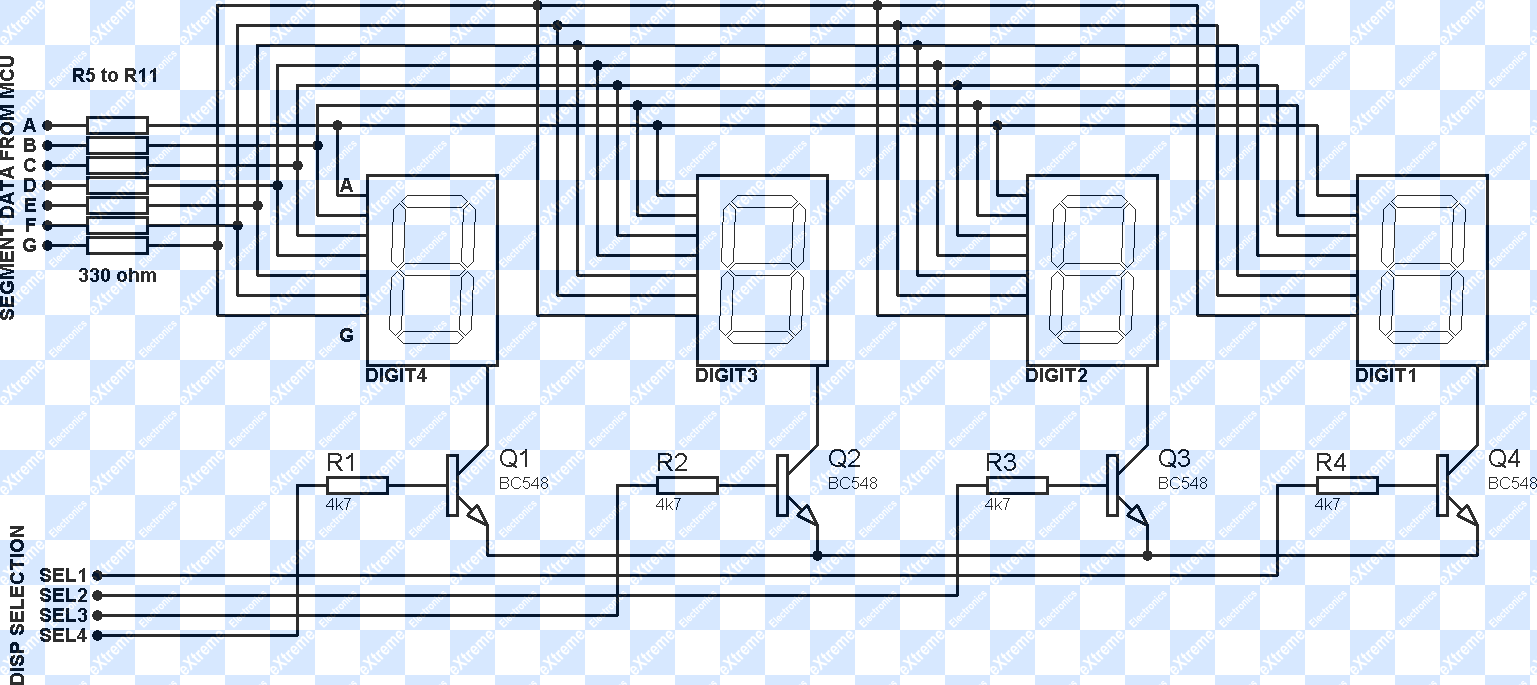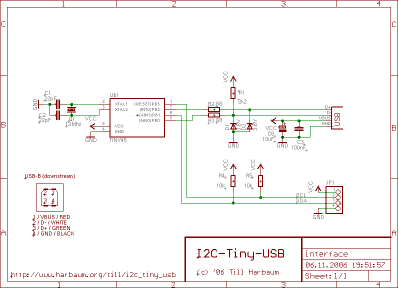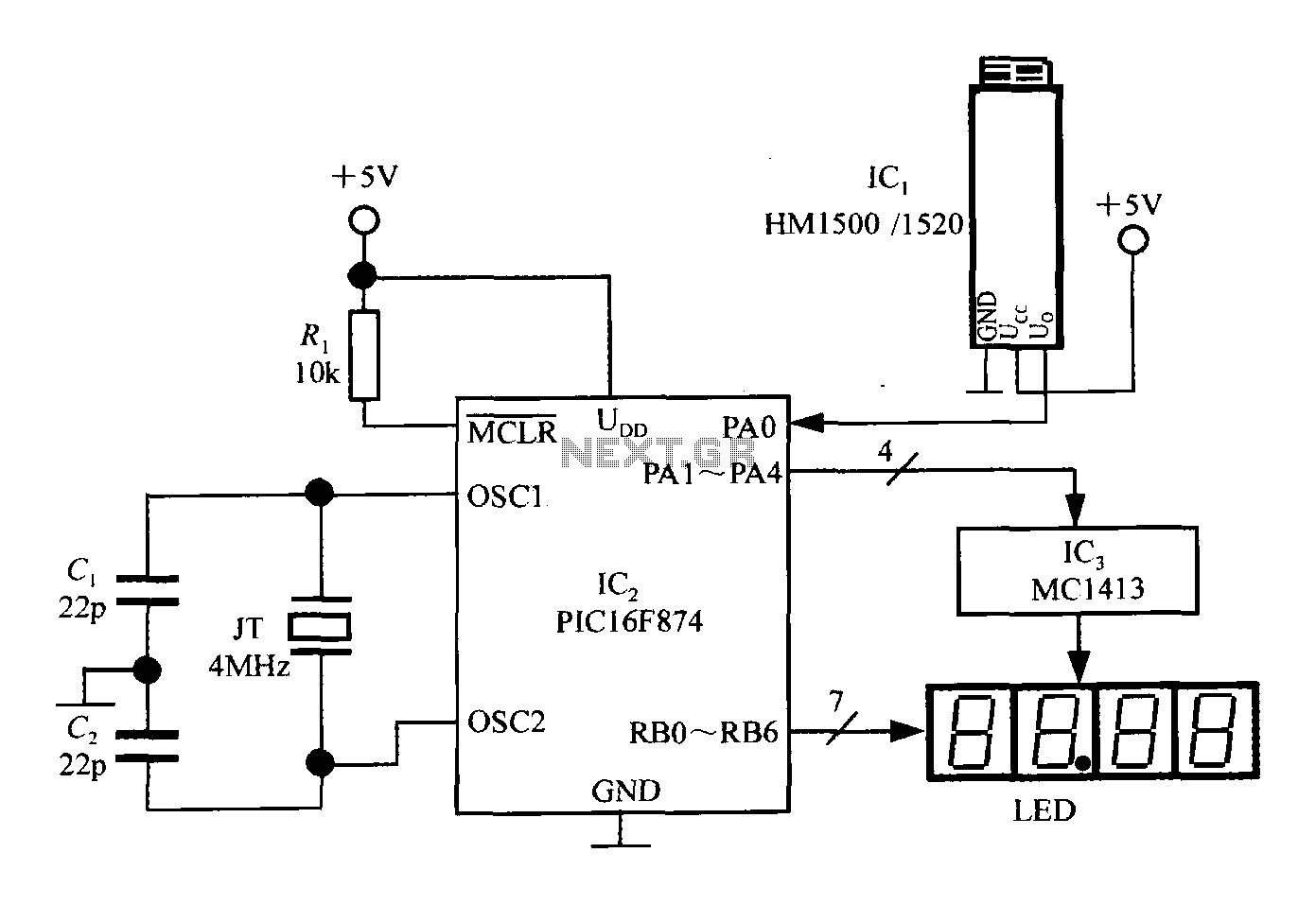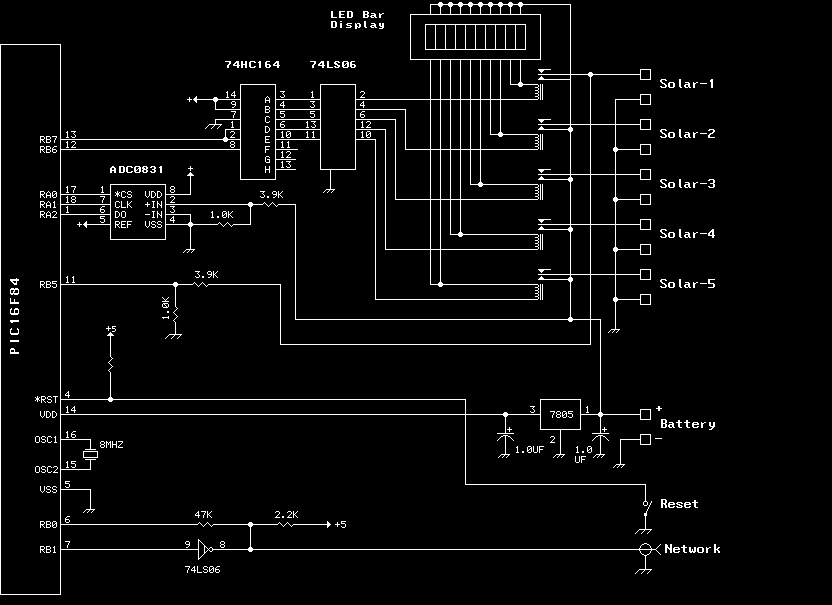
Thermometer with PIC Microcontroller

The project involves displaying the current room temperature using an LM35 temperature sensor. This schematic differs from a previous schematic that utilized a multiplexed seven-segment display. In the earlier schematic, the display select I/O pins were RA0, RA1, RA2, and RA3. In this new schematic, the display lines are RA1, RA2, RA3, and RA4, as RA0 is designated for use as an analog input channel for the output of the LM35. The demonstration project is implemented on a PIC Development Board, which contains the essential circuitry to support the microcontroller (MCU) while the specific project components are developed on an expansion board. The LM35 temperature sensor is interfaced through a simple program designed to connect with the sensor using the internal Analog-to-Digital Converter (ADC) of the PIC MCU. This program displays the current environmental temperature on an LED module. The microcontroller used is from the PIC18FXXXX series by Microchip, and the programming is done using the HI-TECH C Compiler for PIC18 MCUs.
The schematic for this project integrates an LM35 temperature sensor, which outputs a voltage proportional to the temperature in degrees Celsius. The LM35 connects to the PIC microcontroller via one of its analog input pins, specifically RA0, which reads the output voltage from the sensor. The ADC of the PIC18FXXXX series MCU converts this analog voltage to a digital value, which can then be processed to determine the temperature.
The display mechanism employs a multiplexed seven-segment display controlled by the microcontroller. In this configuration, the display lines are connected to the I/O pins RA1 through RA4. The multiplexing technique allows for efficient use of the microcontroller's pins, enabling the display of numerical values representing the temperature without requiring an excessive number of pins. The program running on the microcontroller continuously reads the temperature data from the LM35, processes it, and updates the display accordingly.
The PIC Development Board serves as the foundation for this project, providing power and necessary interfaces for the microcontroller and peripheral components. The expansion board allows for easy integration of the LM35 and the display module, facilitating a seamless development process. Overall, this setup efficiently demonstrates the capability of the PIC microcontroller to interface with analog sensors and drive a display for real-time temperature monitoring.We will use them to show current room temperature using a LM35 temperature sensor. Please note that this schematic is slightly different from our previous schematic on multiplexed seven segment display. The display select i/o pins were RA0, RA1, RA2, RA3 on that schematic. But in this schematic the display lines are RA1, RA2, RA3, RA4 this is because RA0 is used as analog input channel for LM35`s output. We use our PIC Development Board for making the above demo project. The PIC Development Board has all the core circuitry to sustain the MCU while the project specific part is developed on the expansion board. /* LM35 Temperature Sensor INTERFACING TEST PROGRAM - Simple Program to connect with LM temperature sensor using the internal ADC of PIC MCU.
The program displays the current environment temperature on LED Module. MCU: PIC18FXXXX Series from Microchip. Compiler: HI-TECH C Compiler for PIC18 MCUs 🔗 External reference
The schematic for this project integrates an LM35 temperature sensor, which outputs a voltage proportional to the temperature in degrees Celsius. The LM35 connects to the PIC microcontroller via one of its analog input pins, specifically RA0, which reads the output voltage from the sensor. The ADC of the PIC18FXXXX series MCU converts this analog voltage to a digital value, which can then be processed to determine the temperature.
The display mechanism employs a multiplexed seven-segment display controlled by the microcontroller. In this configuration, the display lines are connected to the I/O pins RA1 through RA4. The multiplexing technique allows for efficient use of the microcontroller's pins, enabling the display of numerical values representing the temperature without requiring an excessive number of pins. The program running on the microcontroller continuously reads the temperature data from the LM35, processes it, and updates the display accordingly.
The PIC Development Board serves as the foundation for this project, providing power and necessary interfaces for the microcontroller and peripheral components. The expansion board allows for easy integration of the LM35 and the display module, facilitating a seamless development process. Overall, this setup efficiently demonstrates the capability of the PIC microcontroller to interface with analog sensors and drive a display for real-time temperature monitoring.We will use them to show current room temperature using a LM35 temperature sensor. Please note that this schematic is slightly different from our previous schematic on multiplexed seven segment display. The display select i/o pins were RA0, RA1, RA2, RA3 on that schematic. But in this schematic the display lines are RA1, RA2, RA3, RA4 this is because RA0 is used as analog input channel for LM35`s output. We use our PIC Development Board for making the above demo project. The PIC Development Board has all the core circuitry to sustain the MCU while the project specific part is developed on the expansion board. /* LM35 Temperature Sensor INTERFACING TEST PROGRAM - Simple Program to connect with LM temperature sensor using the internal ADC of PIC MCU.
The program displays the current environment temperature on LED Module. MCU: PIC18FXXXX Series from Microchip. Compiler: HI-TECH C Compiler for PIC18 MCUs 🔗 External reference





